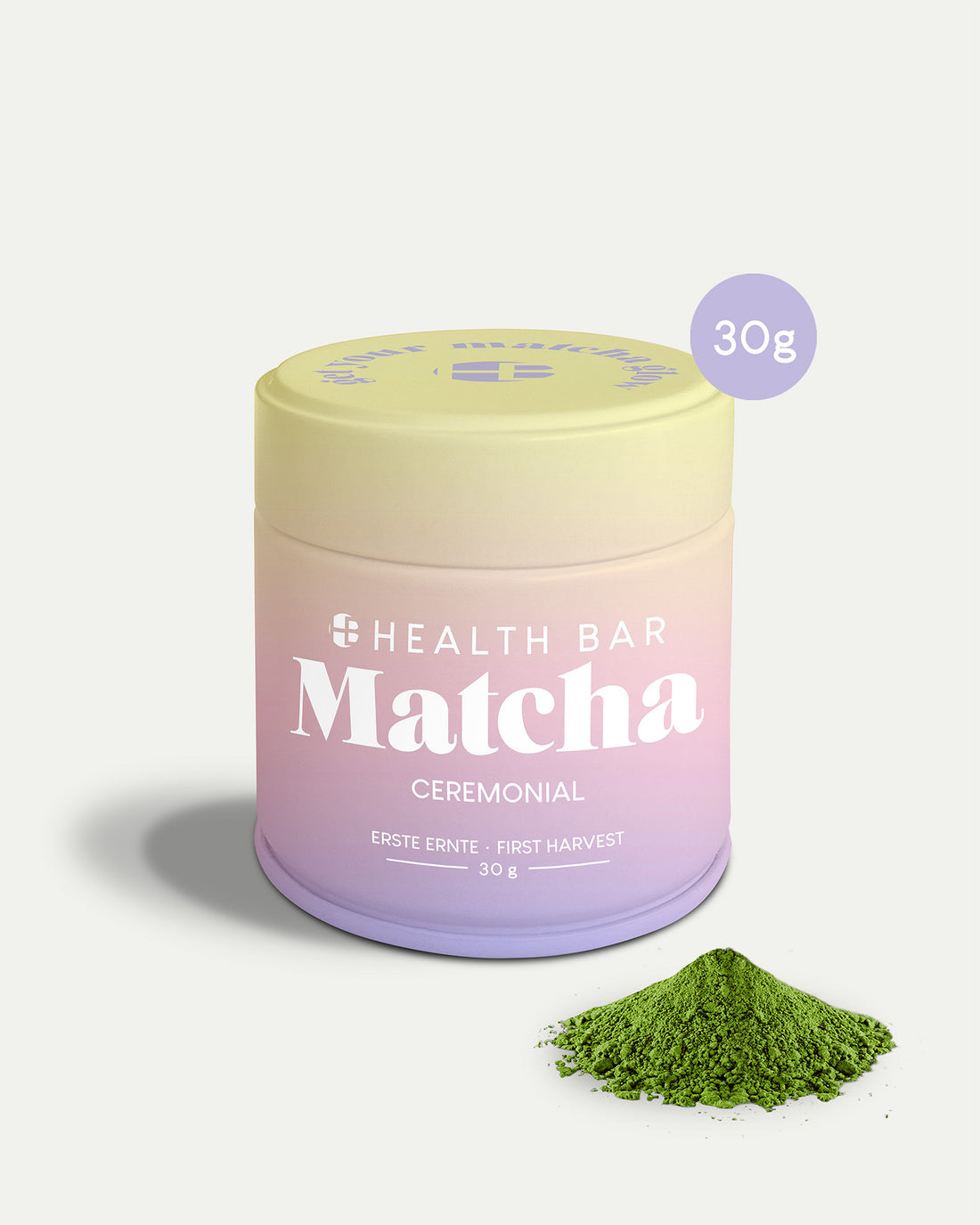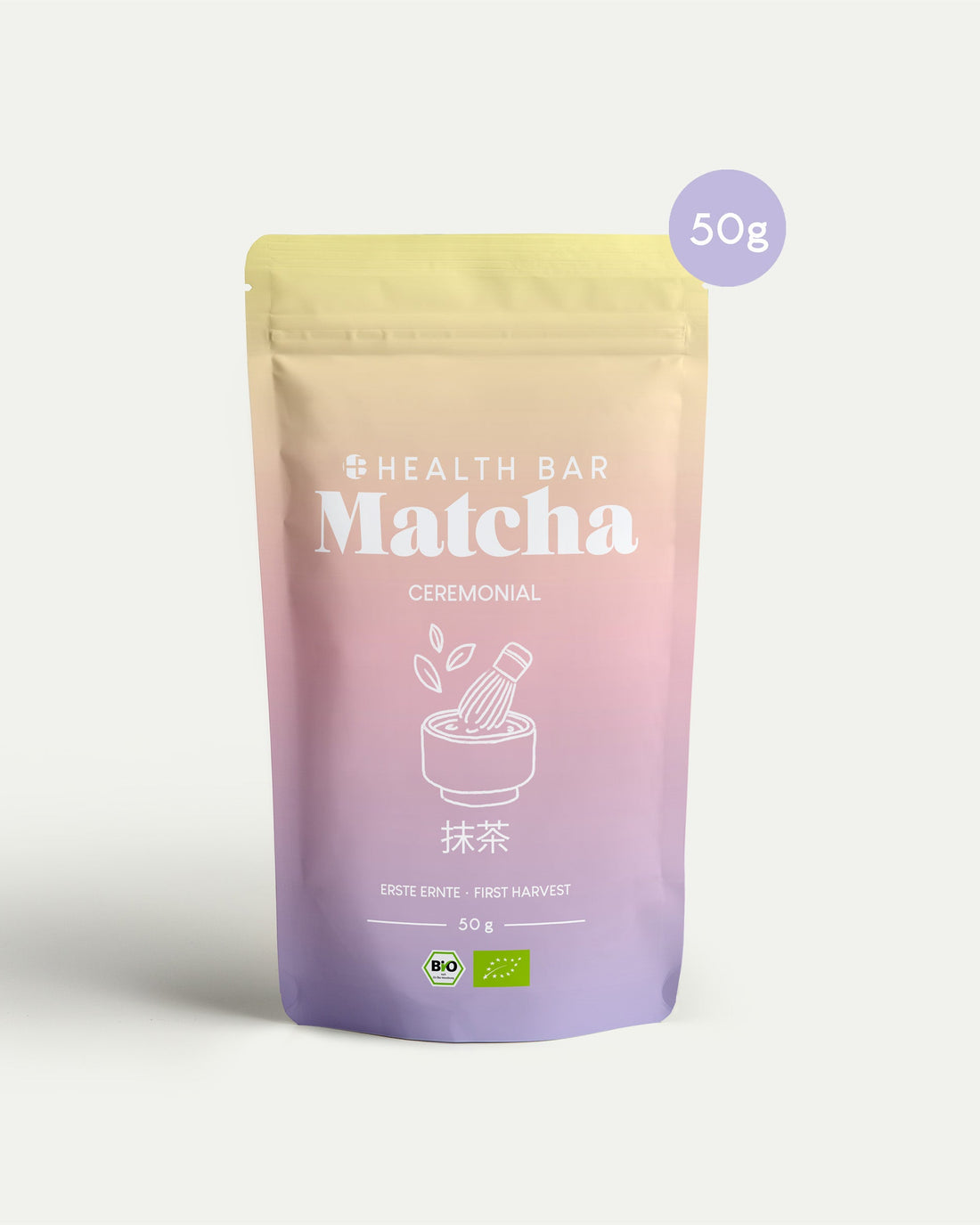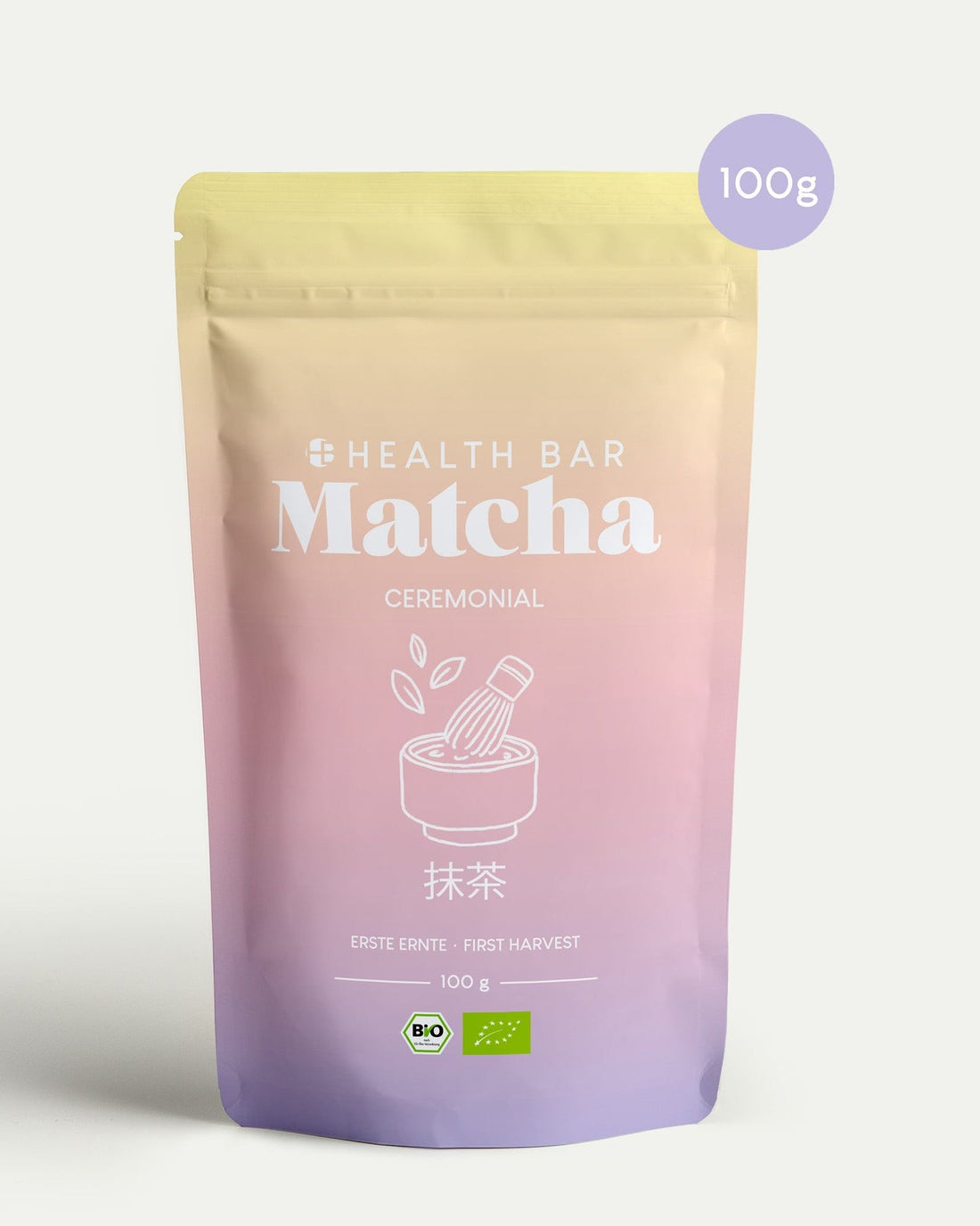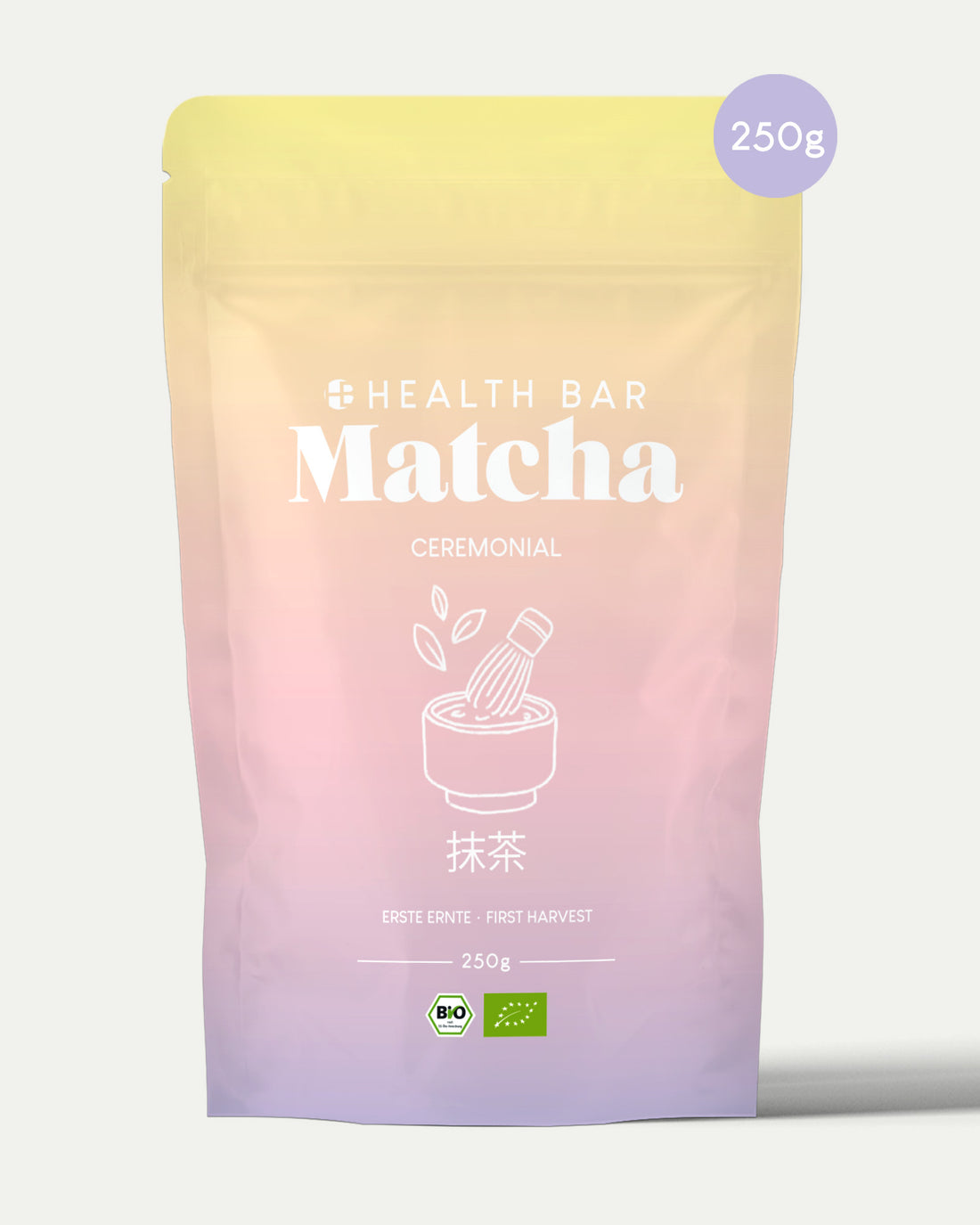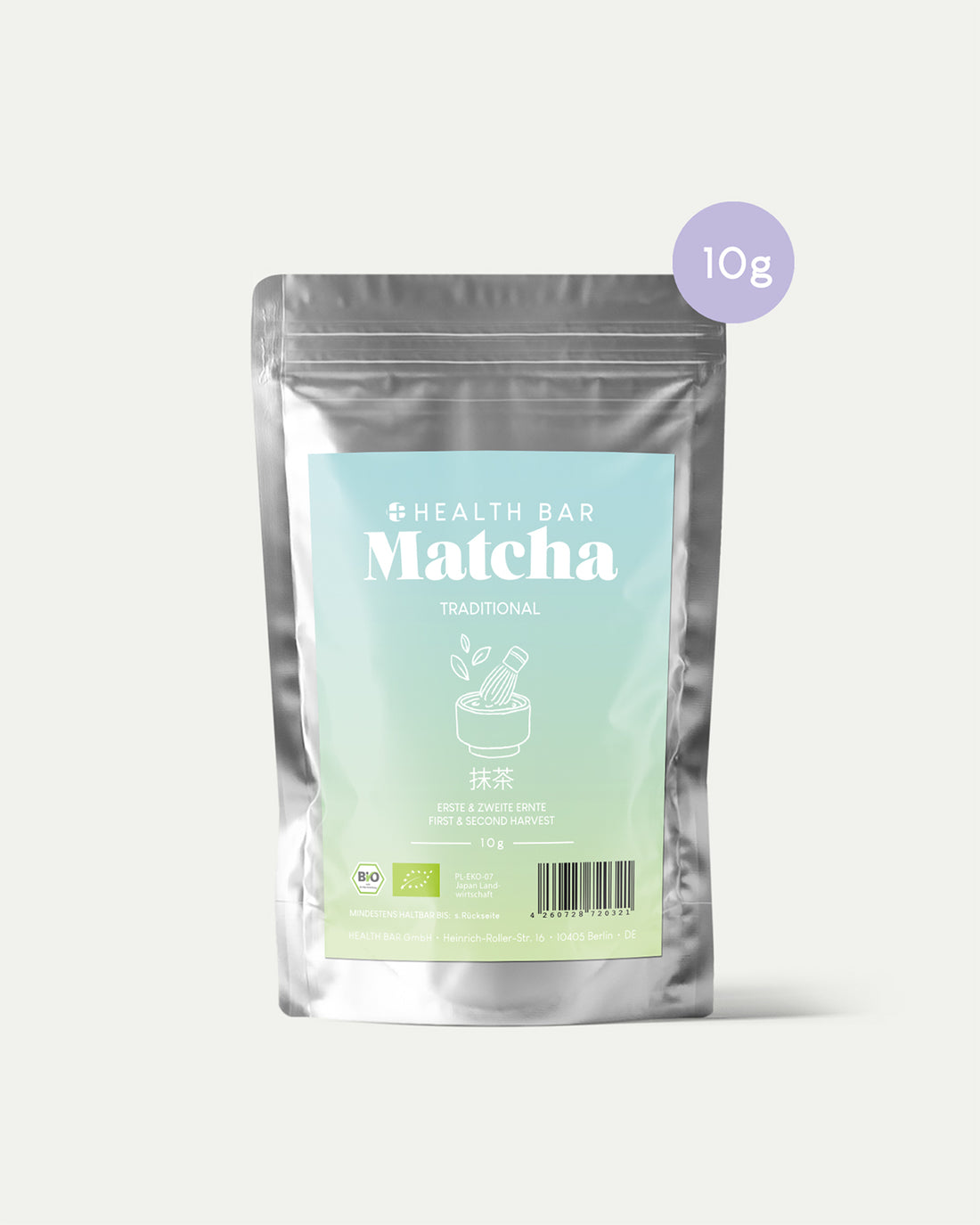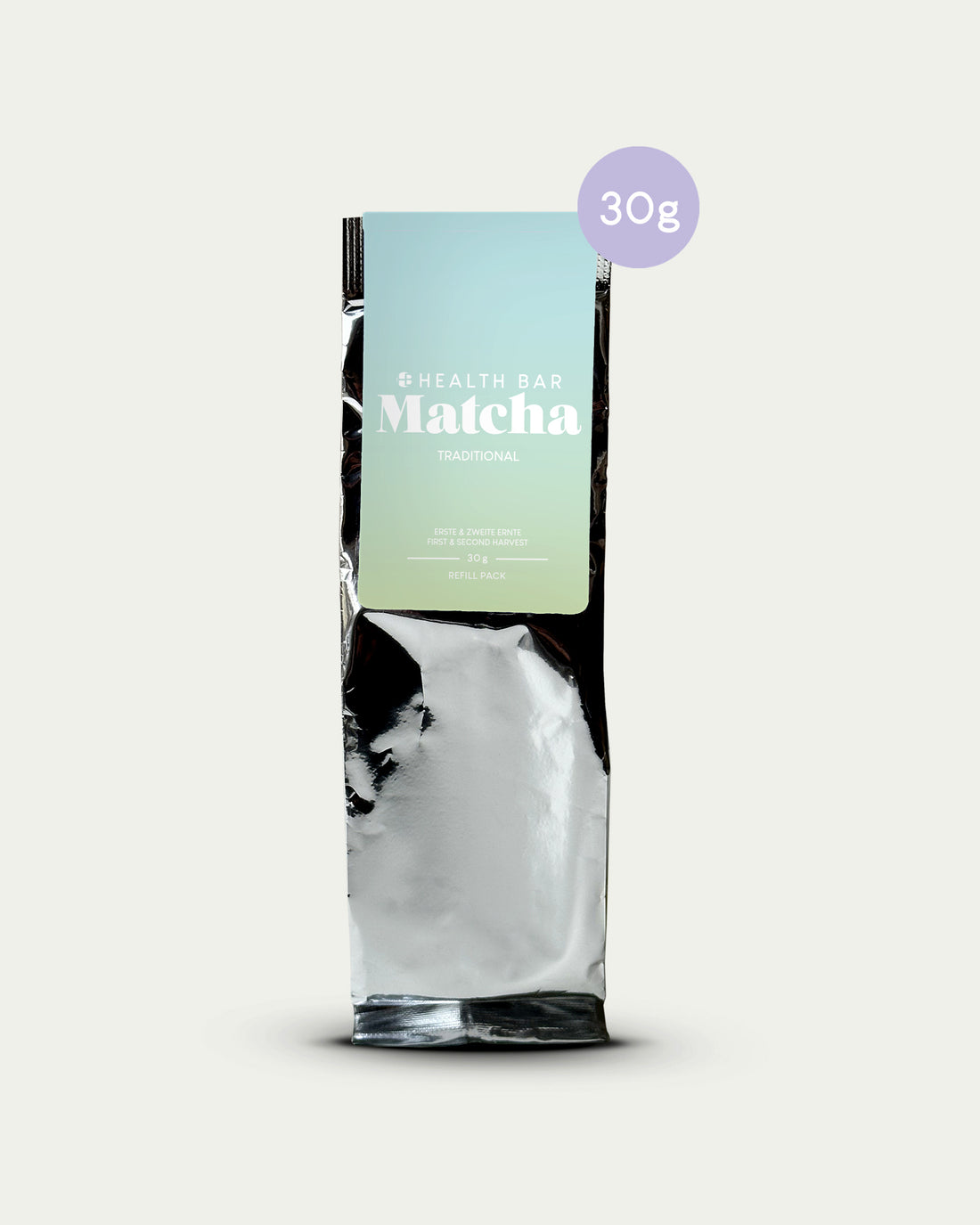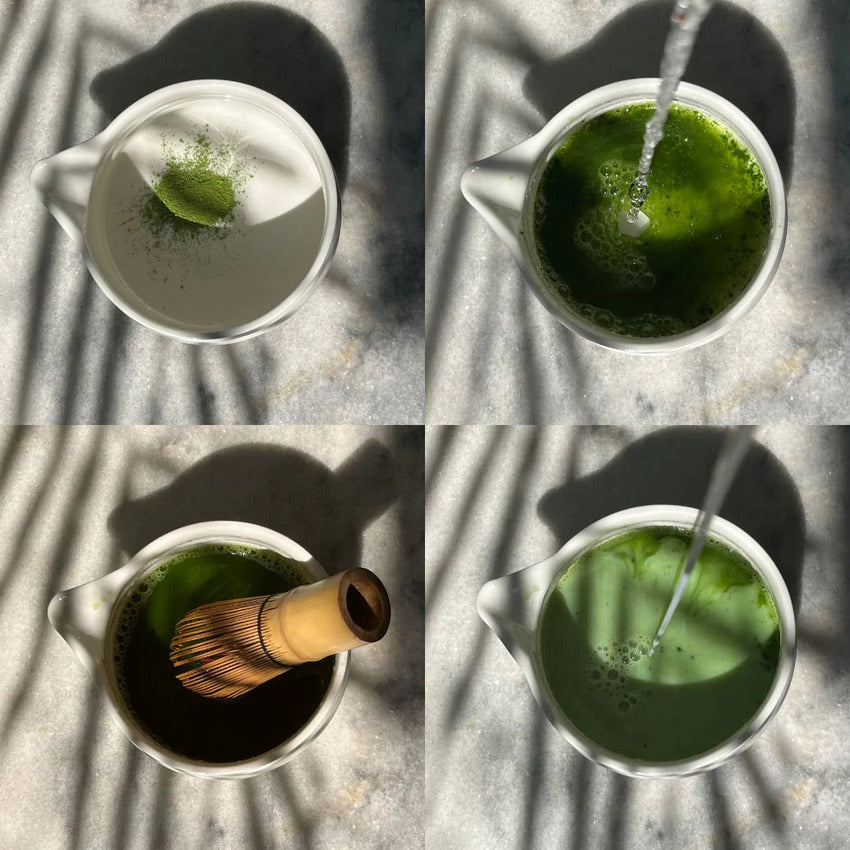
A pleasure for body and soul
The art of matcha preparation
Matcha, known in Japan as "green gold," is enjoying growing popularity among tea lovers worldwide. Preparing this unique beverage with its diverse flavor nuances not only provides a morning energy boost but also a moment of calm and balance. Discover this delicious green tea from Japan with us and learn how it's traditionally prepared.
Instructions for preparing a traditional matcha tea
The act of Matcha preparation is a deeply rooted ritual that expresses mindfulness and respect for the centuries-old traditionIt's an art form that requires concentration and care, yet also an invitation to indulge in a moment of peace. The following instructions will guide you through the traditional steps to brew authentic matcha tea at home.
-
Required utensils
For the traditional preparation of matcha, special utensils are used to optimize the experience of the ceremony and the flavor of the tea. A matcha bowl, a bamboo whisk, and a bamboo spoon are essential for preparing the tea in the traditional way. These tools facilitate stirring, foster a deep connection to the tea ceremony, and help create an authentic matcha experience.
-
Checklist for Matcha Preparation
Our matcha is of such high quality that you don't need a sieve: More information
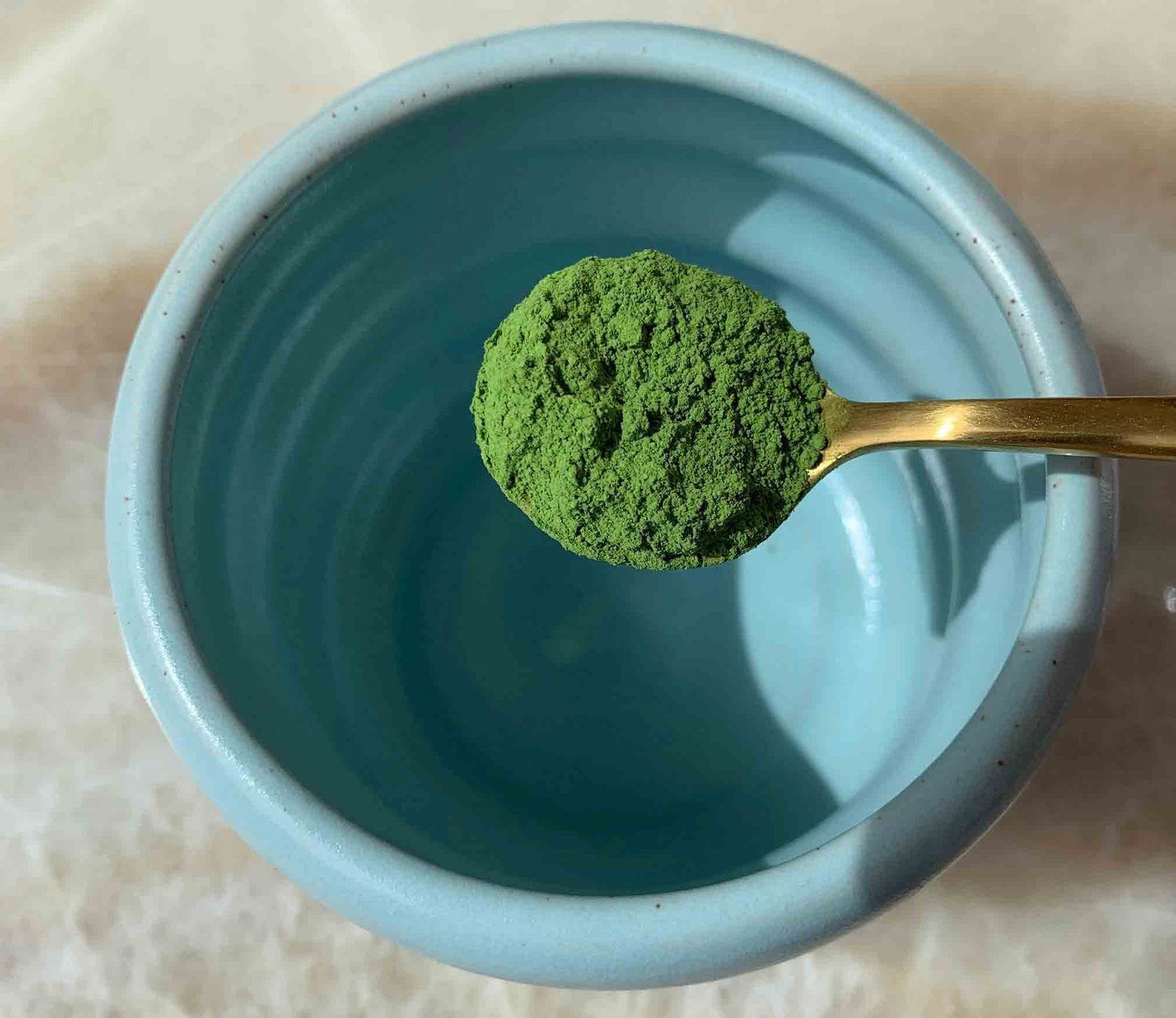
1. Dose Matcha
Use the Chashaku bamboo spoon or a teaspoon to 1–2 slightly heaped teaspoons of matcha into your chawan. Our matcha doesn't need to be sieved.
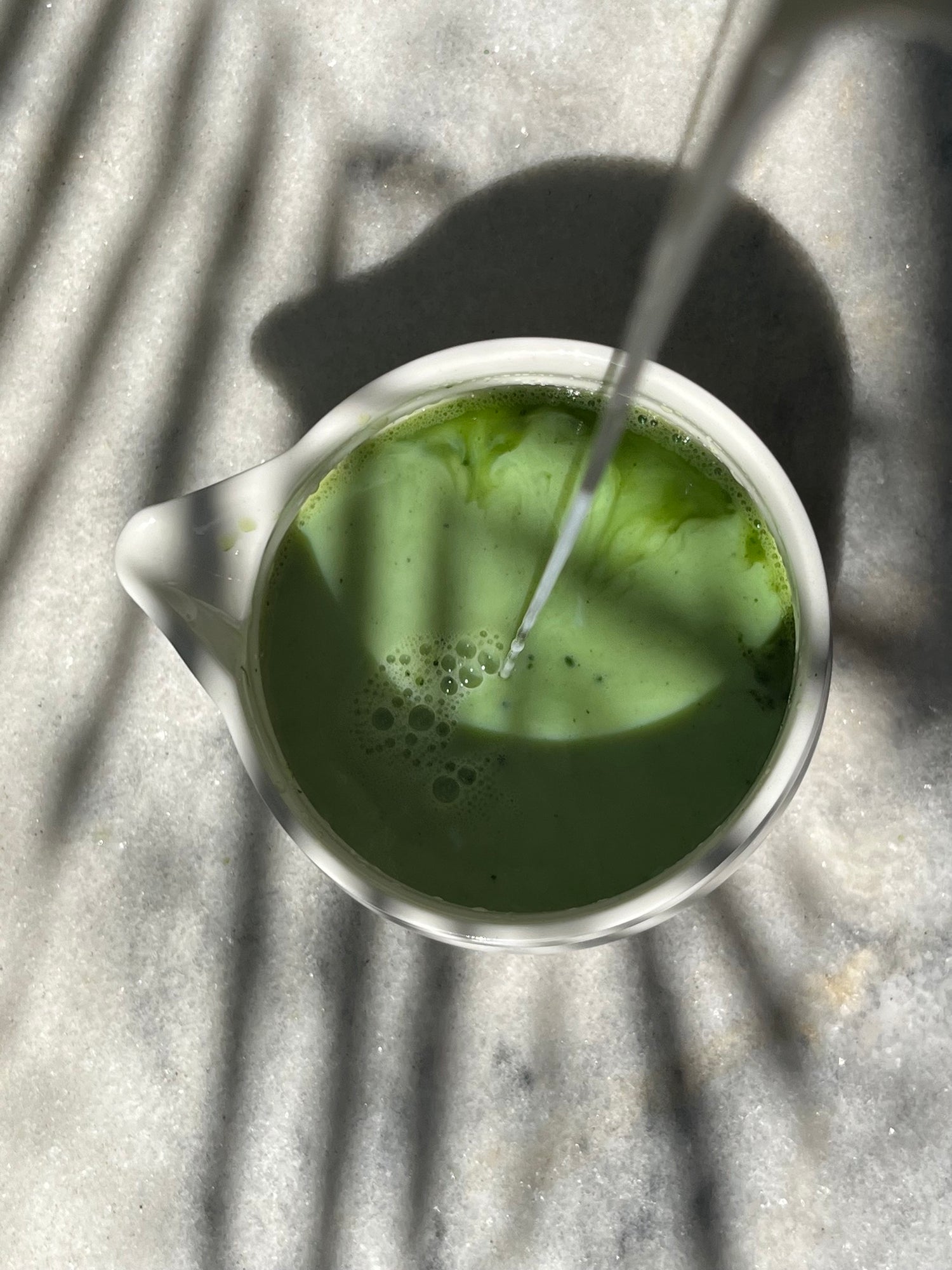
2. Add water
Water carefully 70–100 ml of the prepared approx. 80 °C hot water into the bowl.
Make sure the water is not too hot so that the matcha does not become bitter and retains nutrients.
You can also use cold water for preparation.
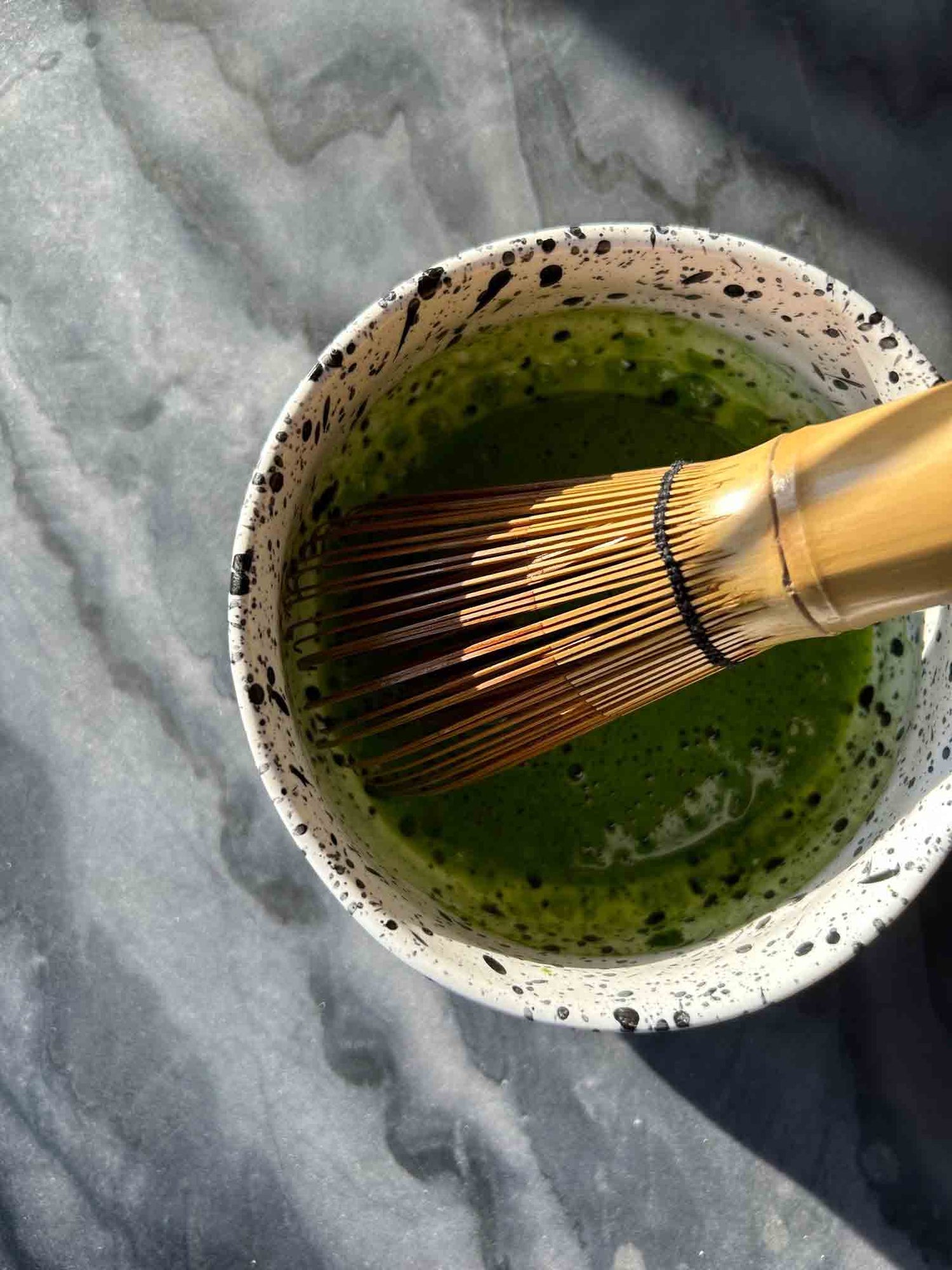
3. Hit
Grab the chasen and hit the tea quickly in a W or M-shape until a fluffy foam layer Small bubbles should form on the surface.
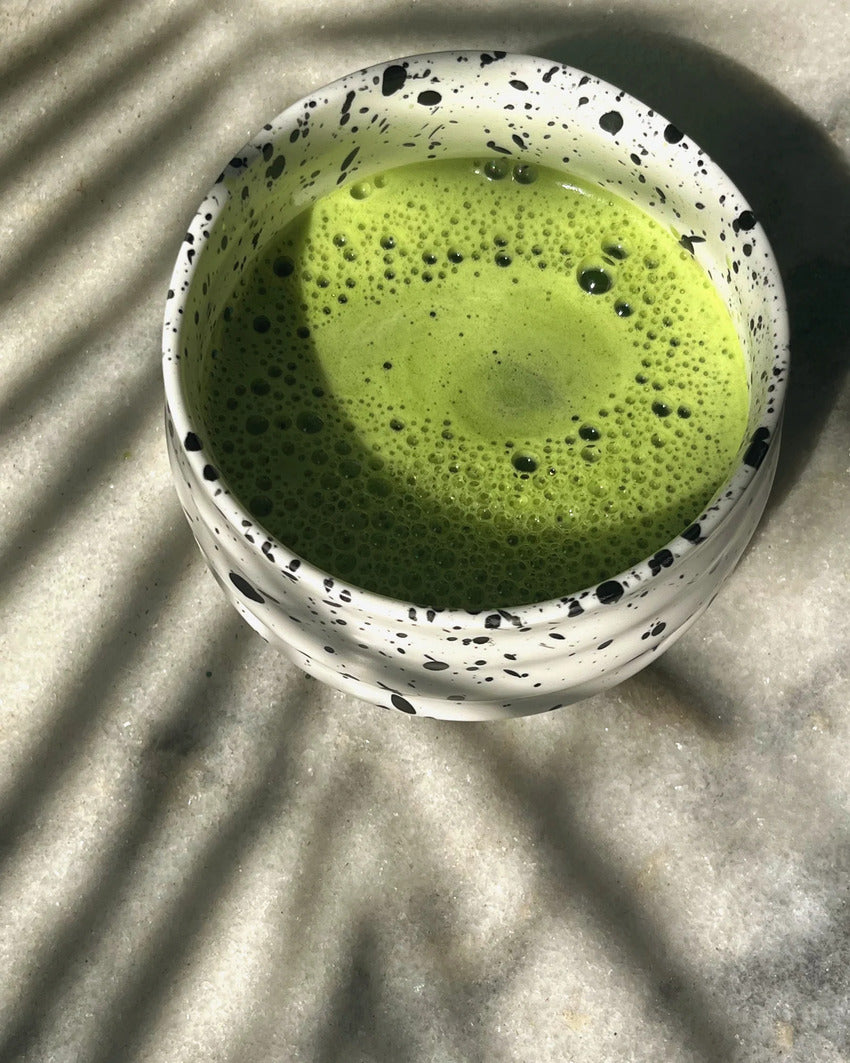
4. Enjoy
Take a moment to appreciate the freshly prepared matcha with all its benefits and express gratitude before drinking it in small sips. In Japan, this is called ITADAKIMASU (頂きます).

Experience your Matcha Moment
The perfect starter set for you
✔ Contains everything you need to get started
✔ Saves time and ensures proper preparation
✔ High-quality organic matcha
✔ A traditional bamboo whisk for perfect results
Tips for preparing matcha
- Water temperature: Make sure the water does not boil to preserve the full flavor of the matcha.
- Foam formation: A fine, creamy foam is the sign of a perfect matcha.
- Matcha amount: Experiment with the amount of powder to suit your individual taste.
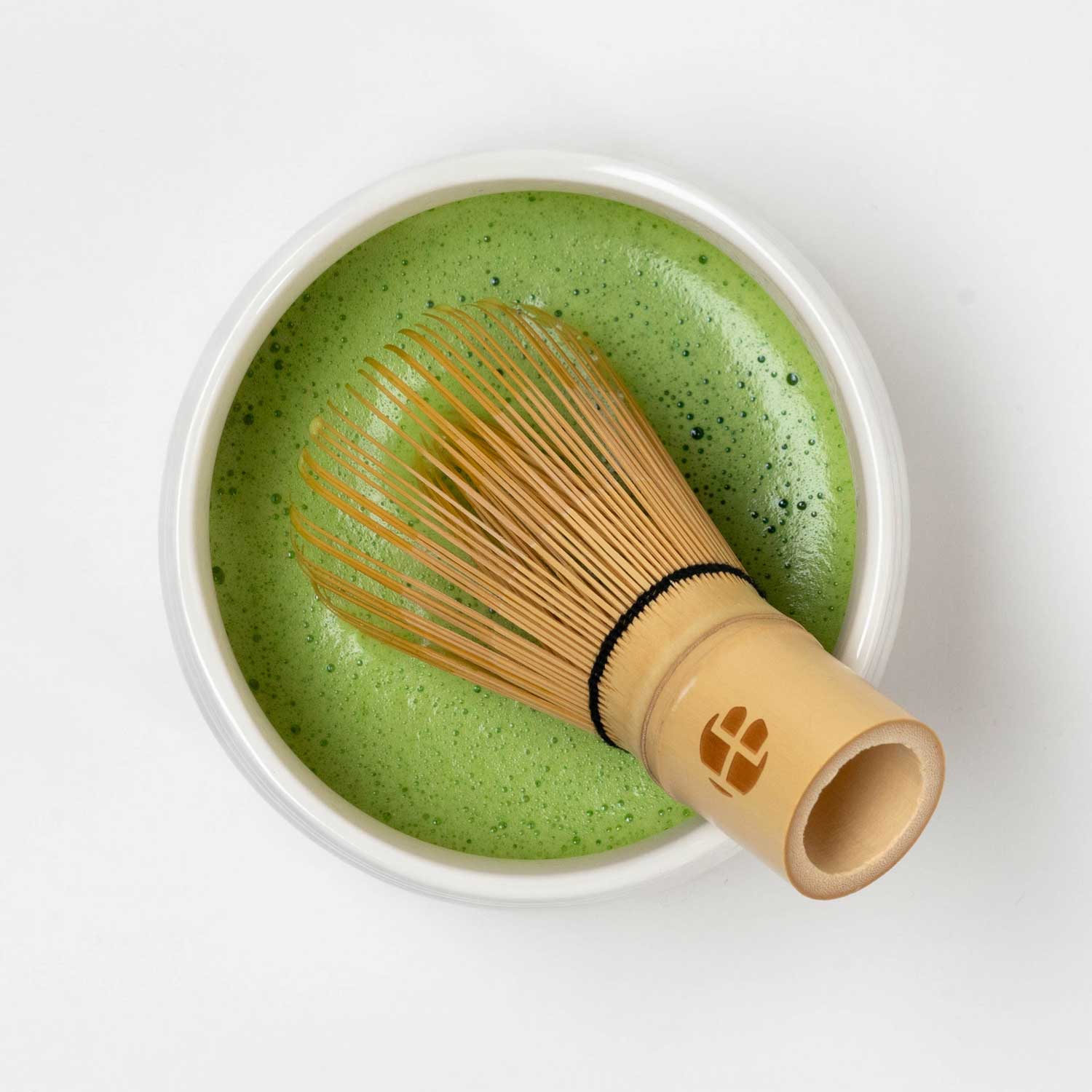
How to use your matcha whisk correctly
The chasen, the traditional matcha whisk, is essential for perfect preparation – but how do you care for and use it properly? In this guide, we'll show you what's important to ensure your matcha always turns out beautifully foamy and your whisk lasts a long time.
Modern preparation methods
Beyond the classic approach, a world of modern ways to enjoy matcha opens up. Matcha latte and iced matcha, in particular, are enjoying great popularity and offer a delicious refreshment.
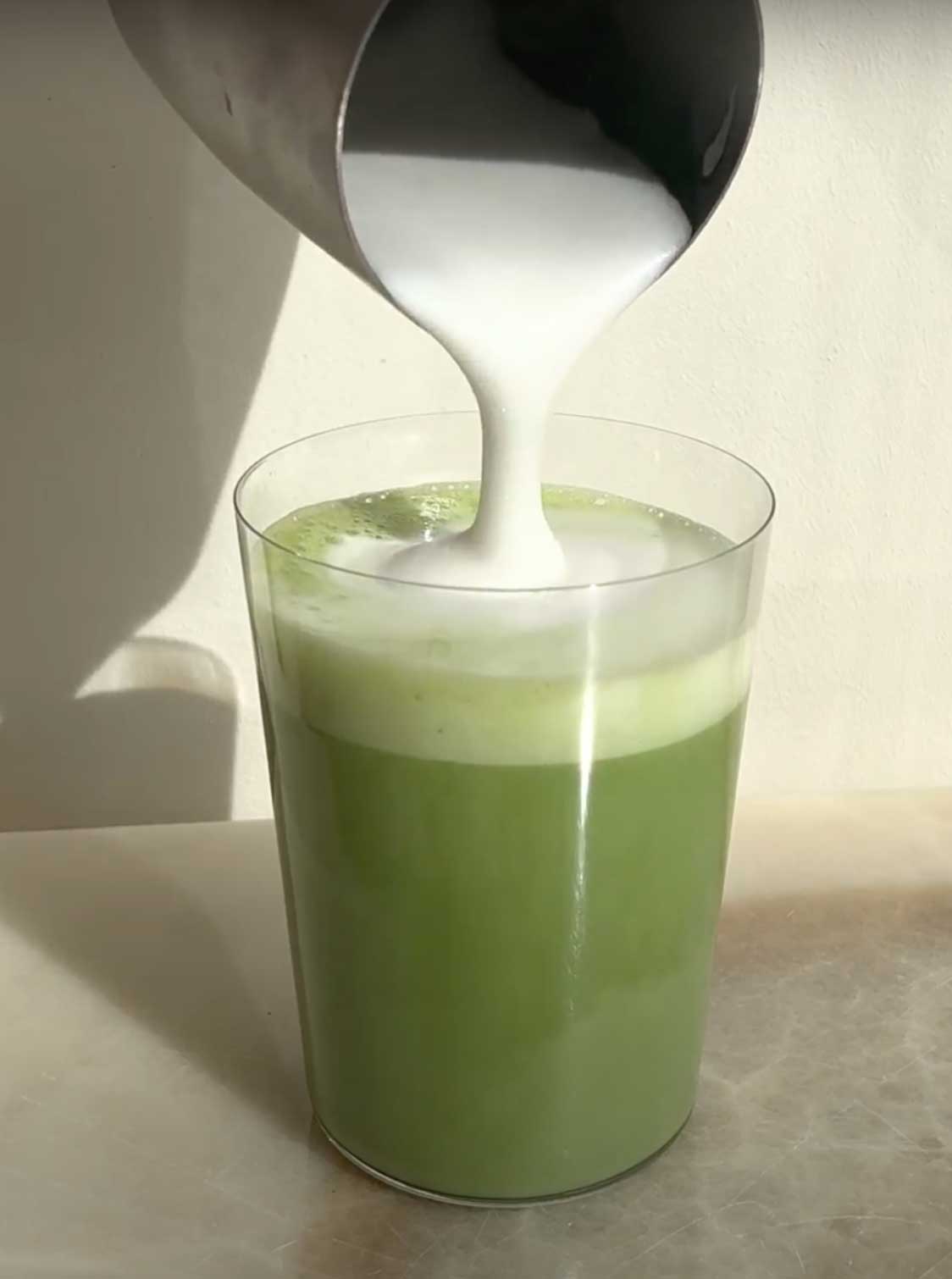
Matcha Latte
Matcha latte is characterized by a divine interplay of creamy milk and the rich, savory aroma of green tea. Learn how to create this delicious treat in this article.
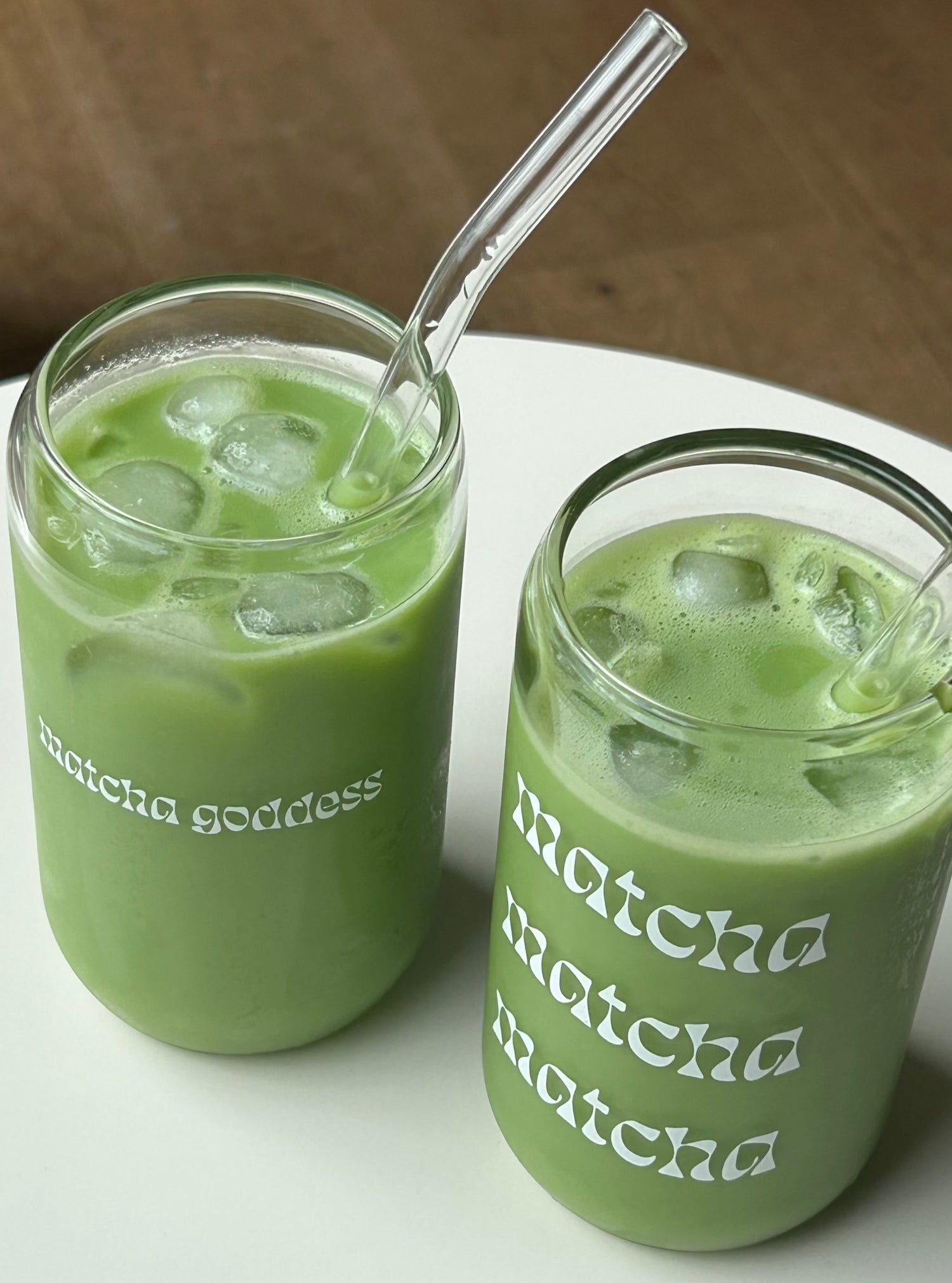
Iced Matcha
On hot summer days, iced matcha is a refreshing treat that stimulates the senses in a variety of ways. Discover how to make this invigorating cult drink yourself in our guide.
Can matcha be prepared cold?
For warm days or when you're in a hurry, cold-mixed matcha is perfect. Preparing it in a shaker is a popular option. Use one to four scoops of matcha powder and add 150 to 500 milliliters of water, depending on your preference. Shake the whole thing vigorously, and add ice cubes to make the matcha the perfect summer drink.
Thanks to the low water temperature, the valuable vitamins are preserved. The basic recipe can be varied in many ways by adding milk, ice cream, or other ingredients to regularly add variety to your tea creation.
FAQs
What is the best way to store matcha?
Always store matcha in an airtight container in a cool, dark place to maintain its freshness and color.
How long does matcha last?
Unopened, matcha can be stored for several months. Once opened, it is best consumed within 1–2 months.
Can matcha go bad?
Matcha loses its flavor and discolors over time, especially if stored improperly. If it tastes bitter, this is a sign that it's spoiled.
How do I know if my matcha is still good?
Good matcha is characterized by a bright green color and a fresh, slightly sweet aroma. Discoloration and a dull aroma are signs that the matcha is past its prime.
The fascination of Matcha
Matcha, the vibrant green powder from Japan, represents far more than a simple beverage—it embodies a rich history, deep-rooted traditions, and meaningful rituals. The fascination surrounding matcha extends beyond its unique flavor. It stems from the skill of its production, the spiritual significance of its ceremony, and its modern rediscovery as a versatile superfood.
-
Matcha preparation: a heritage with tradition
Its origins date back to the practices of Zen Buddhism in Japan, where matcha was used not only to enhance mindfulness during meditation but also as a central element in the highly ritualized tea ceremony, chanoyu. This ceremony emphasizes harmony, respect, purity, and stillness—values that resonate in every sip of matcha.
-
A symbol of perfection
Matcha production is an art form that requires years of experience. The tea leaves (tencha) are carefully harvested by hand, steamed, and slowly ground in granite stone mills into a fine powder so intense that it has been used as a pigment in traditional Japanese painting. This process preserves not only the vibrant green color and rich flavor, but also all the nutrients of the leaves.
-
A source of inspiration
In recent years, matcha has taken the world by storm, far beyond Japan's borders. It inspires chefs, baristas, and health professionals to create new creations—from matcha lattes and smoothies to desserts and skincare products. Its versatility and blend of tradition and modernity make matcha a symbol of contemporary culinary innovation.




